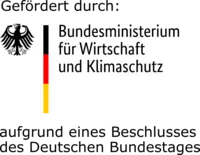SEDOS - The Importance of Sector Integration in the Context of the Energy Transition in Germany - Modeling with a National Open Source Reference Energy System
| Partners |
|
| Funding | Federal Ministry for Economic Affairs and Climate Action (BMWK) |
| Duration | January 2022 until December 2024 |
| Contact | Beneharo Reveron Baecker |
General description
The terms sector integration or sector coupling have become indispensable in discussions of energy and climate policy. Sector integration is expected to make a decisive contribution to achieve ambitious climate protection goals. This implies new challenges for system-analytical energy planning, which cannot focus on individual subsystems, but must take a holistic energy system perspective in order to meet the new requirements and possible solutions.
The aim of the research project SEDOS, coordinated by the IER of the University of Stuttgart, is to improve the representation of sector coupling in energy system models and to establish greater comparability of the models by means of open data. The areas of electricity supply, PtX & conversion, heat market, industry and transport are to be represented. In addition to the orientation towards Open Science, the project also has the goals of jointly developing a reference data set for the consideration of sector integration in energy system models for Germany and a coordinated model structure for three OS models (oemof, TIMES, FINE) with a focus on the energy system of Germany. The criteria of transparency and comprehensibility, detailing and simplification as well as balance between the subsectors and solvability of the models are to be equally considered. Thus, the robustness, transparency and quality of quantitative analyses will be substantially improved.
Subproject of the Chair of Renewable and Sustainable Energy Systems:
Energy system models are usually only applied by experts. An application in a wider circle fails due to the lack of simple user interfaces and clear specifications for the use of the models. Therefore, in the second work package, TUM is involved in the task of creating a simple user interface that allows an extended circle of users a) to use a finished model, b) to make simple changes to the input data and, if possible, c) to make simple changes to the model structure.
In the third work package, led by TUM, a higher-level model structure will be developed that considers the following aspects:
- Definition of system boundaries and interfaces between the subsystems
- Creation of a formal reference energy system with focus on consistency to the database structure and an already existing ontology for energy systems (OEO)
- Definition of exogenous variables to ensure that the degrees of freedom in the model correspond to the underlying issues.
Furthermore, as a central element of this work package, the classical division into sectors, as well as the spatial and temporal division of the energy system models must be questioned in order to be able to represent the sector coupling in an improved way. Therefore, the TUM focuses on the development of a method to determine the best possible partitioning or aggregation in sectoral, spatial, and temporal resolution, independently of the individual model frameworks.
